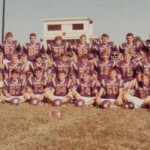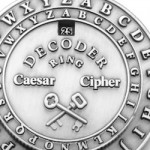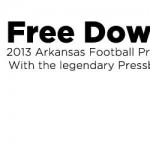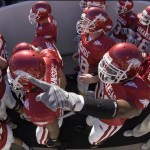California Offers ‘Bill of Rights’ to PAC-12 Student Athletes
Should Arkansas Do the Same for Razorback Athletes?
 Ten years ago this week, the NCAA’s president Myles Brand endorsed increasing athletic scholarships by $2,000 to $3,000 a year to cover cost of living expenses. His support, given in an interview with the New York Times, adds to a growing movement advocating NCAA student-athletes – especially those who are poor – deserve a stipend.
Ten years ago this week, the NCAA’s president Myles Brand endorsed increasing athletic scholarships by $2,000 to $3,000 a year to cover cost of living expenses. His support, given in an interview with the New York Times, adds to a growing movement advocating NCAA student-athletes – especially those who are poor – deserve a stipend.
“A lot of times they don’t have the financial capacity to just buy some of the bare essentials. Just day-to-day stuff that you need, shaving cream and toothpaste and all those things,” Dean Lee, athletic director of Arkansas State, told the Arkansas Democrat-Gazette. “We’re trying to do everything we can for our student-athletes, and we understand the restrictions and limitations that they’re having to operate under from a financial standpoint.”
To bump up the worth of each of its 197 athletic scholarships,, Arkansas State would have to raise its athletic budget from $400,000 to $600,000. The University of Arkansas can offer up to 228 scholarships in men’s and women’s sports, which would lead to an increase of $460,000 to $685,000 to the annual department budget.
Arkansas athletic director Frank Broyles said Arkansas, like most SEC schools, could afford the increases because of massive booster support and donations. Only Vanderbilt would have a problem, he told the Democrat-Gazette: “I would guess they’d lose a lot of money in their men’s athletic department. They don’t have any fan base, so if they didn’t generate the money from contributions, it would have to come from the school money.”
Brand doesn’t have the power to institute the stipend. School administrators do. But so far they haven’t voted for it and are unlikely to do so in the near future. Most schools don’t want to incur the additional costs and the argument that the money can be found in the NCAA’s recent 11-year, $6.2 billion contract with CBS and ESPN for championship game broadcast rights is misleading, Broyles said.
“Broyles noted the money generated by the NCAA’s contract already is going to the schools and would have to be redistributed to cover increased scholarship costs.
“That means the conferences are going to get less and divide less [among their members],” Broyles said. “It’s all being spent. That’s just like robbing Peter to pay Paul.
“Somebody would suffer, because the money now is already being divided.” – Arkansas Democrat-Gazette.
But the people most suffering are those with the least power, proponents of the stipend say. One such advocate, Ramogi Huma, chairman of the Collegiate Athletes Coalition, questioned whether the NCAA president can make the necessary changes to aid athletes. “The NCAA is an old bureaucratic structure and rarely does anything get done. If the NCAA was flexible or reasonable this would have been done a long time ago.” [Arkansas Democrat-Gazette; Sept. 28, 2003]
—
Huma’s organization has evolved and is now called the National College Players Association. But it still advocates for benefits for former and current student-athletes such as a stipend. On top of scholarship increases of $3,000 – $5,000 to cover the full cost of attendance, Huma et al currently want to guarantee scholarship renewals for permanently injured players, insure injured players are not stuck with sports-related medical bills, an independent concussion expert at each NCAA football game and for part of college football playoff revenues to be used for head trauma research.
Last weekend, these issues were pushed into the national limelight when 28 NCAA football players on Georgia, Northwestern and Georgia Tech wrote the initials “APU” on their equipment. The acronym, standing for “All Players United,” was part of a campaign spearheaded by the NCPA players’ council to “help raise awareness in terms of the gaps in protection the players have,” Huma said on Slate’s Hang Up and Listen podcast. “This [campaign] is something the players see as the beginning, not the end,” Huma said. “They want to continue to wear these wristbands and write “APU” on their wristbands or wrist tape throughout the season … that way every one of the NCAA’s games becomes a pursuit of justice that [the NCAA] can’t get away from, until justice is secured.”
The climate circa 2013 is much different from 2003 when Broyles addressed the stipend issue. Huma added: “When you first started saying that players really need some more protections, everyone says ‘Well, man, these guys are spoiled athletes. You can’t possibly want more. But at this point people are realizing that players can be stuck with medical bills, that they can lose their scholarships for any reason – even injury. And, actually, the disparity has grown. Ten, twelve years ago the money pales in comparison to where it is now. You see that reflected in the coaches’ salaries.”
You also see it in the more than $1 billion in new TV revenue that Huma wants to see a portion of redirected to players for guarantee of health and education rights.
Huma and his California-based organization have a precedent of success when pushing for reform. A decade ago, student-athletes were restricted from getting paid to teach their own skills at summer camps or as individual coaches. “Now, players can give one-on-one lessons [in their sports] and charge reasonable rates for that,” he told Slate.
Last year, California passed a “student-athletes bill of rights” that provides continuing education for players at schools with graduation rates under 60 percent, makes schools pay for insurance premiums for low-income athletes, provides scholarships for players who suffer incapacitating injuries and covers medical expenses for players up to two years after they exhaust their eligibility, according to CBS Sports.
“Neither personal injury nor poverty should dim the dreams of a student-athlete pursuing a college degree, particularly when their performance has enriched their college,” Sen. Alex Padilla, D-Los Angeles, said in a statement. Padilla cited a 16-year study showing that each year thousands of students are hurt while training or playing sports, with many of the injuries ending their chance to continue participating, CBS Sports reported.
California’s student-athlete bill of rights only applies to the state’s Pac 12 programs. Since its passage, other state legislators have considered creating their own versions for the student-athletes of their own state’s major conference school(s).
***
Before this week 10 years ago, only two teams had ever beaten Texas at Austin and Alabama at Tuscaloosa in the same year. One-time SEC member Sewanee did in 1911; TCU did it in 1955.
Welcome to the club, Arkansas.
On the heels of an emotional road upset against sixth-ranked Texas, Arkansas traveled to Alabama and knocked off the Crimson Tide 34-31 in double overtime. The ninth-ranked Razorbacks (4-0) dominated at offensive line and stormed back from a 31-10 deficit, capping the game with a Jimarr Gallon interception and 19-yard field goal from Chris Balseiro. “With this team, you can’t ever doubt anything,” Arkansas quarterback Matt Jones said. “We can be down 50-0 and we’ve got a chance to win.”
“Dazed Alabama players had trouble explaining how a game they seemingly had in hand slipped away,” according to the Arkansas Democrat-Gazette. “Everything was going right for us,” Alabama guard Justin Smiley said. “We had all the momentum on our side and we blew a 21-point lead. I don’t think I’ve ever seen anything like it in my life.”
Arkansas running back Cedric Cobbs, who has entered national outlet polls for the Heisman Trophy, finished with a career-high 198 yards and one touchdown on 36 carries. Cobbs has now rushed for four straight 100 yard-plus games, the best such Razorback streak since Jerry Eckwood did it five straight games in 1975.
The Hogs’ offensive linemen, featuring right tackle Shawn Andrews, left tackle Bo Lacy and right guard Mark Bokermann, combined for 57 knockdown blocks. Andrews led the way with 21. [Arkansas Democrat-Gazette; Sept. 28, 2003]
25 years ago …
Duane Washington, older brother of Derek Fisher, faces possible expulsion from the NBA after an arrest on cocaine possession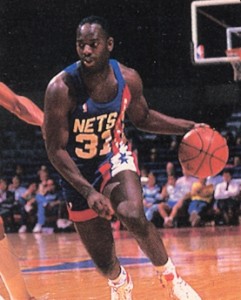 charges. Two Newark officers found the 24-year-old New Jersey guard sitting in a parked 1986 Pontiac TransAm and another man standing next to the driver’s window talking to him. Washington tried to drive away as the officers approached but was blocked by a double-parked car. Six vials with a substance believed to be cocaine were found in Washington’s car.
charges. Two Newark officers found the 24-year-old New Jersey guard sitting in a parked 1986 Pontiac TransAm and another man standing next to the driver’s window talking to him. Washington tried to drive away as the officers approached but was blocked by a double-parked car. Six vials with a substance believed to be cocaine were found in Washington’s car.
Washington, a Little Rock native, played at Middle Tennessee State before being drafted by the Washington Bullets in 1987. He was cut, signed by the Nets in March and averaged 3.6 points per game. [Associated Press; Sept. 28, 1988]
The 6-4 Washington was likely more physically gifted and talented than Fisher at basketball. Fisher wrote in his autobiography that Washington’s struggles with drugs inspired him to focus on his own ambitions and to avoid possible bad influences in his own adolescence. Washington, who made a brief comeback in 1992, played in a total of 19 NBA games. His little brother is at 1206 games (#28 all-time) and counting.
48 years ago …
Satchel Paige, one of baseball’s greatest and most resilient players, proved it beyond a doubt age 59 by pitching for three innings of a major league game. Bill Valentine, the longtime Arkansas Travelers GM, umpired the game in Kansas City.
Here are excerpts from Rob Neyer’s SB Nation article on the anniversary:
“Umpire Bill Valentine was behind the plate that night. Valentine told me that Paige was really pitching, and the Red Sox really were doing their best to hit him. “He kept the ball down, kept it moving below the knees,” Valentine recalled. “I’ll bet you he wasn’t throwing 80, and they’d swing and say, ‘Son of a bitch, that was right there!’ “
…
“Satch retired the Red Sox in order in both the second and third innings, and needed just 28 pitches for his entire outing. Jim Gosger was the first batter and the last, as he grounded out to end the third. And today it doesn’t bother him one bit. “My two biggest thrills in baseball,” he told me, “were batting against Satchel Paige and hitting a home run against Whitey Ford the only time I faced him. As far as I’m concerned, Satchel was a prince.”
The prince would never pitch again in the majors, although a few years later he did make Hank Aaron look silly in an exhibition game. There’s just never been anybody else like Satchel Paige, and there won’t ever be again.”
[h/t to @bwaldrum]
P.S. “Geese” Ausbie, the Philander Smith basketball great and longtime Harlem Globetrotter, played minor league baseball with Paige in the 1950s. El Dorado native “Goose” Tatum, who’d starred for the Globetrotters before Ausbie, also played with Paige.
50 years ago …
Bill Kessinger doesn’t think much of his No. 8 West Memphis’ chances against No. 4 Blytheville in an upcoming Friday night showdown at home. Kessinger’s kids lost in Blytheville 21-7 last year and things got off on the wrong foot this season with a 3-0 loss to Marianna in the opener. “I really don’t think we have much chance of winning. I say that in all sincerity.”
Kessinger may be underselling his team’s ability. These Devils have won their last two games 7-0 and 27-0 and boast excellent size and mobility in an all-senior line: LE Mike Sigman (187 pounds), LT Larry Reynolds (205), LG Mike Wilf (175), C Bruce Jackson (205) RT Larry Van Horn (180) and Gary Southard (180).
And don’t forget the halfback, writes local sports columnist Ed Hayes. Jim “Whizzer” Whisenhunt excelled at a track meet at Blytheville last spring. “Whizzer, as his nicknames implies, can whiz, whether in his underwear on a truck or in a full field pack on the gridiron.” [Blytheville Courier-News; Sept. 27; 1963]
***
Demirel prefers to keep his whizzing to the world of Twitter


